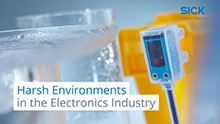Electronics are a part of our daily life. Whether in semiconductor chips in mobile devices, in solar modules for power generation or in batteries for electrical buses and cars - electronics are playing an increasingly important roll.
The automated production of this technology is very complex. Vacuum and high temperature environments are required and aggressive chemicals used.
These requirements not only influence the production locations and the corresponding machines. New challenges are also arising for sensor solutions. How can these be overcome?
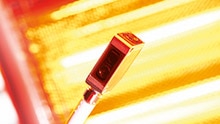
High resistance to temperature
Special production processes must take place under the influence of high temperatures. Temperatures of 100 °C and higher can be required for this. In these processes or even in adjacent production environments, sensor solutions are required which are not harmed by use at these temperatures.

Chemical resistance
Chemicals can either be used as part of the end product, such as the electrolytes in a battery, or as corrosion aids or in other chemical processes, for example in the solar and semiconductor industry.
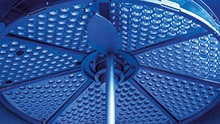
Vacuum resistance
Vacuum chambers and vacuum environments create critical ambient conditions for automation components. Among other things, a vacuum can lead to so-called outgassing. This refers to the escape of gases, which can negatively affect product quality in the worst case scenario. Special materials and production processes must be used to prevent this.
Application examples
High resistance to temperature
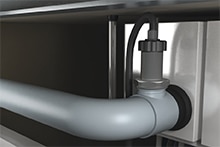
Pressure monitoring of abrasive media in silicon cutting machine
Thanks to the hermetically-sealed stainless steel membrane, the PFT and PBS pressure sensors with rotatable status indicator work even in very corrosive environments and at high temperatures and are resistant to decomposition damage. The moving components are wear- and therefore practically maintenance-free.
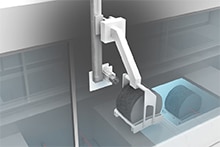
Monitoring the positions of wafer carriers
The position of the wafer carrier can be determined reliably with absolute encoders: with the AFS60 Singleturn on the vertical and the AFM60 Multiturn on the horizontal axis. Thanks to the fieldbus and Industrial Ethernet interface, it is possible to integrate the encoders into the machine controller easily and cost-effectively and they can be used even at extreme ambient conditions such as high temperatures.
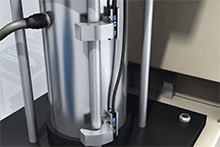
Monitoring of cylinder position at high temperatures
MZT8 magnetic cylinder sensors are perfectly suited to monitor the position of cylinders in process or handling machines. Thanks to its resistance to temperature up to 100 °C, they ensure reliable operation even under these extreme ambient conditions.
Chemical resistance
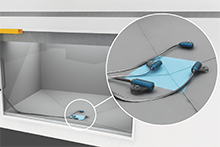
Detecting leaks in chemical containers
The chemicals used in wet processes collect in process tanks on the machines and can be very dangerous. To protect persons and processes, leaks must be reliably detected and escaping chemicals must be removed immediately by operating staff. The WLL180T fiber-optic sensor combined with the LL3-DW02 fibers with PTFE sheath reliably reports chemicals in the collection basin to the Flexi Soft safety controller integrated in the machine.

Corrosive chemical level measurement in wafer cleaning machines
Aggressive chemicals are used in different phases of semiconductor and solar wafer production and then stored in tanks. The UP56 Pure ultrasonic level sensor with PTFE membrane and PTFE housing in the area of the flange reliably detects the level of storage tanks. It features analog and digital outputs, which enables easy electrical integration. It is mechanically compatible with typical industry connections.
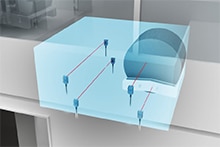
Reliable detection in aggressive process environments
The W4-3 Teflon miniature photoelectric sensor has an IP 69K enclosure rating and as such is suitable for use in chemical environments. SICK’s sensor solutions are known to achieve long mean times between failures (MTBF) and work well in particularly demanding application conditions.
Vacuum resistance

Reliable optical detection in vacuum environments
Fiber-optic sensors from SICK can detect substrates in vacuum environments. Special fibers can be used directly in the vacuum chamber. The special bus-compatible variant can ensure from the outside that several sensors pointing into the chamber through inspection glasses do not interfere with one another.

